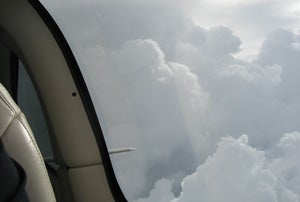It goes without saying that the ultimate goal of any flight is to arrive safely. It’s no secret that certain kinds of accidents typically target certain kinds of pilots flying certain kinds of airplanes.
There are always a few accidents every year that involve freak or tough-to-defend-against events, like bird strikes or unforeseeable structural failures. While it would be nice to be able to cover all of the possibilities all the time, a smarter approach is to pay the most attention to the kinds of accidents that are most likely to happen to you.
Let’s say that you’re a VFR pilot who goes places with your airplane. What accident types are mostly likely to befall you? Flying into an area of IMC while still VFR and hitting the ground or losing control is a biggie. Another is running out of gas and having the subsequent forced landing go badly. Yet another is botching an approach and trying to make it work anyway. All three would be prime candidates for your “It Ain’t Gonna Happen to Me” list.
Pilots who fly for recreation might come up with a different list. Tops on that compilation would be be two well known killers: loss of control in the traffic pattern and loss of control while maneuvering (as the FAA puts it; I call it “loss of control while showing off.”)
Pilots who fly IFR for transportation would be wise to look carefully at icing encounters, thunderstorms, going below minimums on approach and, again, running out of gas.
There are ways to mitigate all of these risks; but before pilots can adopt those strategies, they need to admit the risk going in and be willing to keep an eye out for them every step of the trip.
Take VFR into IMC. There are normally signs that the weather is deteriorating, so the best response to this in-flght emergency is not to let it happen in the first place. But if it does, there’s no harm done as long as you go on the instruments immediately, make that 180 and head back to known VMC, all within total control. When it becomes an issue is when pilots get frozen, hoping beyond hope that things will get better all on their own and terrain or loss of control closes the curtain.
The best approach: Don’t let it happen. Know the risk–be it too-low weather on approach, a big cell right off your nose or a long day turning into night in high terrain–and tell yourself, “It ain’t gonna happen to me” and do something–the right thing–right then and right there to keep that promise to yourself.
